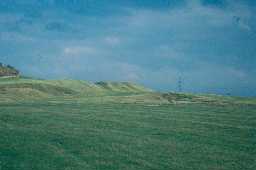Local History
Whittington (Northumberland)
Whittington parish lies in south Northumberland and stretches from Hadrian's Wall in the south to Hallington Reservoir in the north.
The earliest remains in the parish are those of a Neolithic cup and ring marked stone found near Hallington amongst an area of clearance cairns and possible Iron Age or Roman period settlement. Nearby is a Bronze Age burial cairn at Cheviot Farm and another has been excavated at Grindstone Law. At the other end of the parish, a bronze axe has been found at Halton Chesters.
The oldest settlements in the parish belong to the Iron Age. They include the possible remains near Hallington as well as an enclosure on Grindstone Law camp. A series of terraces on Bingfield Fell may also be Iron Age.
Much more is known about the Roman period. Dere Street and the Devil's Causeway Roman roads run through the parish as well as Hadrian's Wall at Halton Shields and Haltonchesters. The remains include the defensive wall itself, turrets, milecastles and a fort at Halton Chesters survive as earthworks or are known from archaeological excavations. The military base of Halton Chesters provided a sufficient permanent population at this time to support a market and civilian settlement. Inside the fort there was a bathhouse and an aqueduct supplying the fort was found in the 19th century. As was customary at this time, cemeteries lay outside the fort and vicus.
In the medieval period, people lived in villages and hamlets at Whittington, Little Grottington, Bingfield, Clarewood and Halton. Remains of many of these former settlements can be seen as earthworks together with remains of their field systems that survive as ridge and furrow; at Halton, the fields extended across the Roman fort. There is still an impressive medieval building standing today at Halton called Halton Castle. It may have been a hall house originally, but tower was added in the 14th century when the threat from the wars between England and Scotland was felt. In the late 17th century, when the need for defences had passed, it was altered to become a more comfortable and fashionable country house.
In the 18th and 19th centuries farming and industry developed. To improve soil fertility lime kilns were built to produce agricultural lime at Shellbraes and Bingfield. A windmill and watermill were built at Great Whittington, the latter probably on the site of a medieval mill. The natural resources of the parish were also exploited, with stone quarries and coalmines, such as Bellway Quarry and Clarewood Colliery. Hallington Reservoir in the north-west of the parish was part of a wider water supply system to Tyneside.
The earliest remains in the parish are those of a Neolithic cup and ring marked stone found near Hallington amongst an area of clearance cairns and possible Iron Age or Roman period settlement. Nearby is a Bronze Age burial cairn at Cheviot Farm and another has been excavated at Grindstone Law. At the other end of the parish, a bronze axe has been found at Halton Chesters.
The oldest settlements in the parish belong to the Iron Age. They include the possible remains near Hallington as well as an enclosure on Grindstone Law camp. A series of terraces on Bingfield Fell may also be Iron Age.
Much more is known about the Roman period. Dere Street and the Devil's Causeway Roman roads run through the parish as well as Hadrian's Wall at Halton Shields and Haltonchesters. The remains include the defensive wall itself, turrets, milecastles and a fort at Halton Chesters survive as earthworks or are known from archaeological excavations. The military base of Halton Chesters provided a sufficient permanent population at this time to support a market and civilian settlement. Inside the fort there was a bathhouse and an aqueduct supplying the fort was found in the 19th century. As was customary at this time, cemeteries lay outside the fort and vicus.
In the medieval period, people lived in villages and hamlets at Whittington, Little Grottington, Bingfield, Clarewood and Halton. Remains of many of these former settlements can be seen as earthworks together with remains of their field systems that survive as ridge and furrow; at Halton, the fields extended across the Roman fort. There is still an impressive medieval building standing today at Halton called Halton Castle. It may have been a hall house originally, but tower was added in the 14th century when the threat from the wars between England and Scotland was felt. In the late 17th century, when the need for defences had passed, it was altered to become a more comfortable and fashionable country house.
In the 18th and 19th centuries farming and industry developed. To improve soil fertility lime kilns were built to produce agricultural lime at Shellbraes and Bingfield. A windmill and watermill were built at Great Whittington, the latter probably on the site of a medieval mill. The natural resources of the parish were also exploited, with stone quarries and coalmines, such as Bellway Quarry and Clarewood Colliery. Hallington Reservoir in the north-west of the parish was part of a wider water supply system to Tyneside.
N13841
UNCERTAIN
Disclaimer -
Please note that this information has been compiled from a number of different sources. Durham County Council and Northumberland County Council can accept no responsibility for any inaccuracy contained therein. If you wish to use/copy any of the images, please ensure that you read the Copyright information provided.
